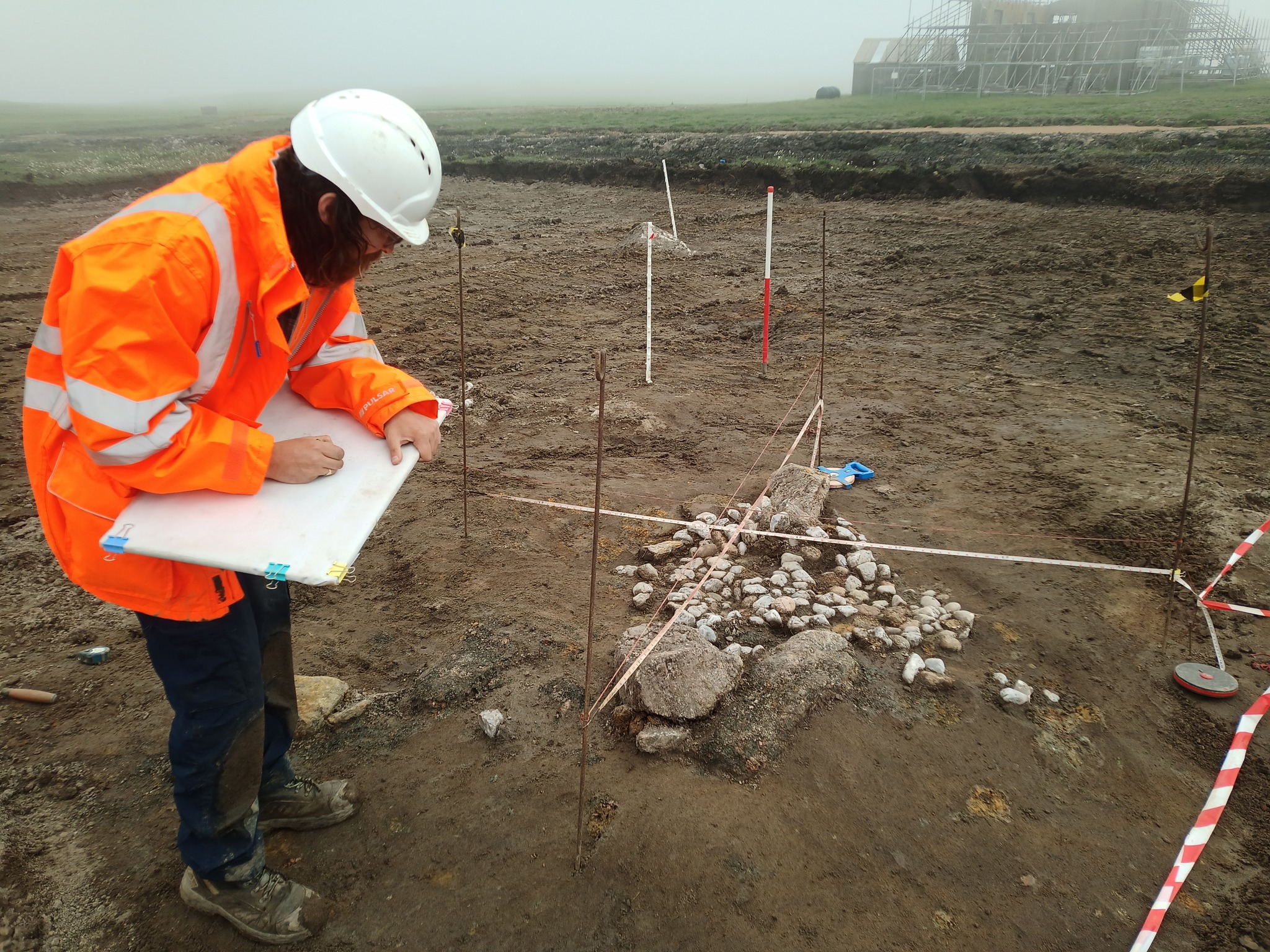
The remains of a Bronze Age ritual ceremony have been found at the construction site for a rocket launch pad in the U.K.
The company SaxaVord Spaceport is developing a ground station network on the island of Unst in Shetland, the northernmost point of the U.K., to launch payloads into various orbits around the Earth.
According to its announcement on Facebook, SaxaVord Spaceport called on AOC Archaeology Group to assess the findings, which include pits and burned bone. The team believe them to be the remains of cremation deposits from an ancient ritual complex, dating back to 2200–1800 B.C.E.
“This is a hugely exciting discovery, and we are looking forward to piecing together the full story,” the company said, adding on Twitter that the find “won’t hamper construction work.”
“The number and density of cremations suggest that the location of their discovery was likely a cremation cemetery that may have been in continuous use over time in prehistory,” Katie O’Connell of AOC Archaeology told the BBC.
“A standout feature uncovered so far is the remains of a quartz setting. White quartz is often suggested to have had significance in prehistory and is found in association with burial tombs, rock art panels, and deposited carefully at domestic sites.”
The remains at the construction site. Photo courtesy of AOC Archaeology Group/SaxaVord Spaceport.
Val Turner, an archaeologist with the Shetland Regional Trust, called the news “hugely exciting” and told the BBC she had “always suspected” that rings of boulders in the area could be cremation cemeteries.
“The Bronze Age is perhaps the period of Shetland’s past which we know the least about and this is a wonderful opportunity to change that,” she said.
Prehistoric activity dating as far back as 4320 B.C.E. has been discovered in Shetland over the past century. In particular, the archaeological site of Jarlshof has turned up Neolithic structures as well as a Bronze Age settlement that includes wheelhouses, a smithy, and a broch.